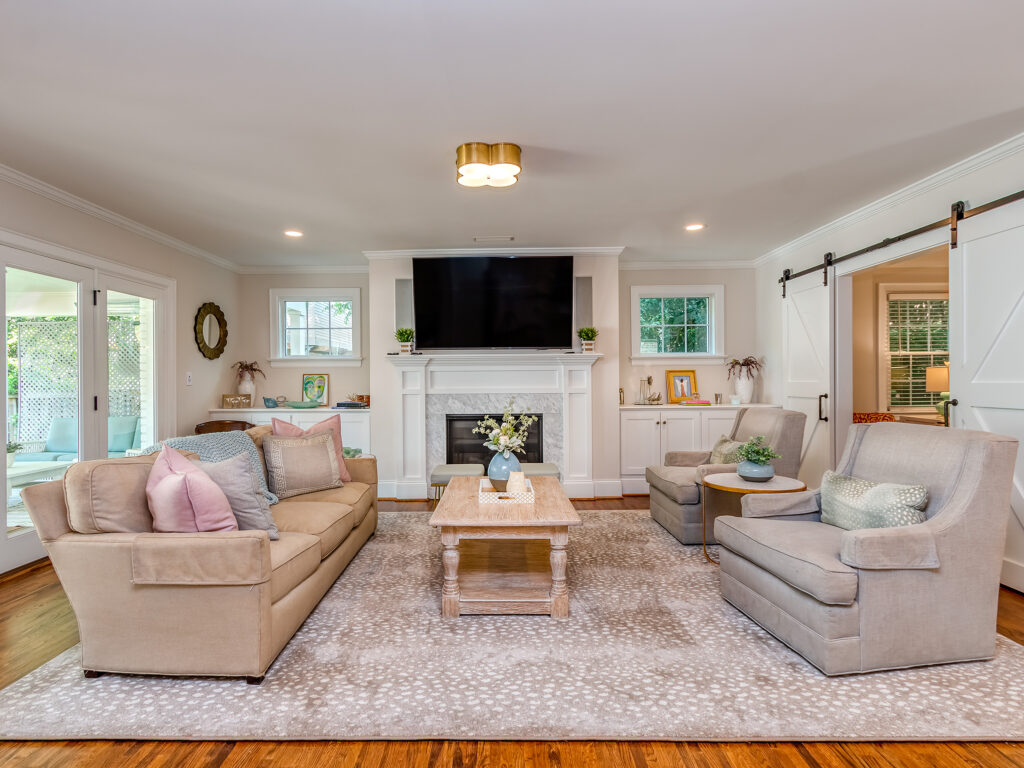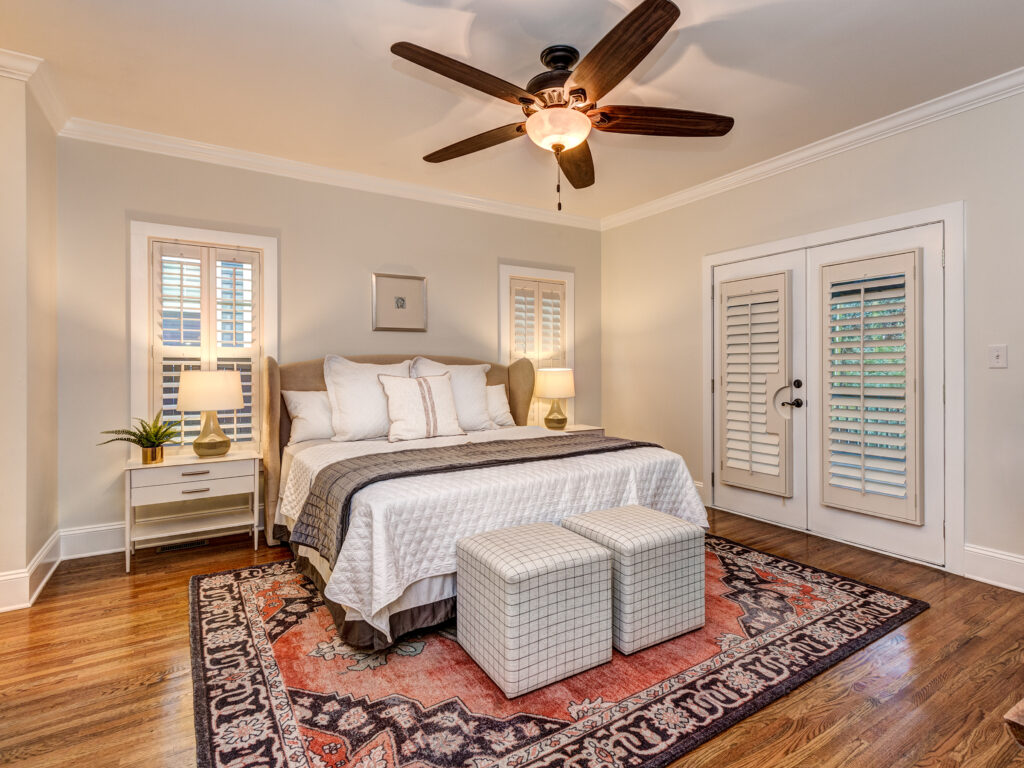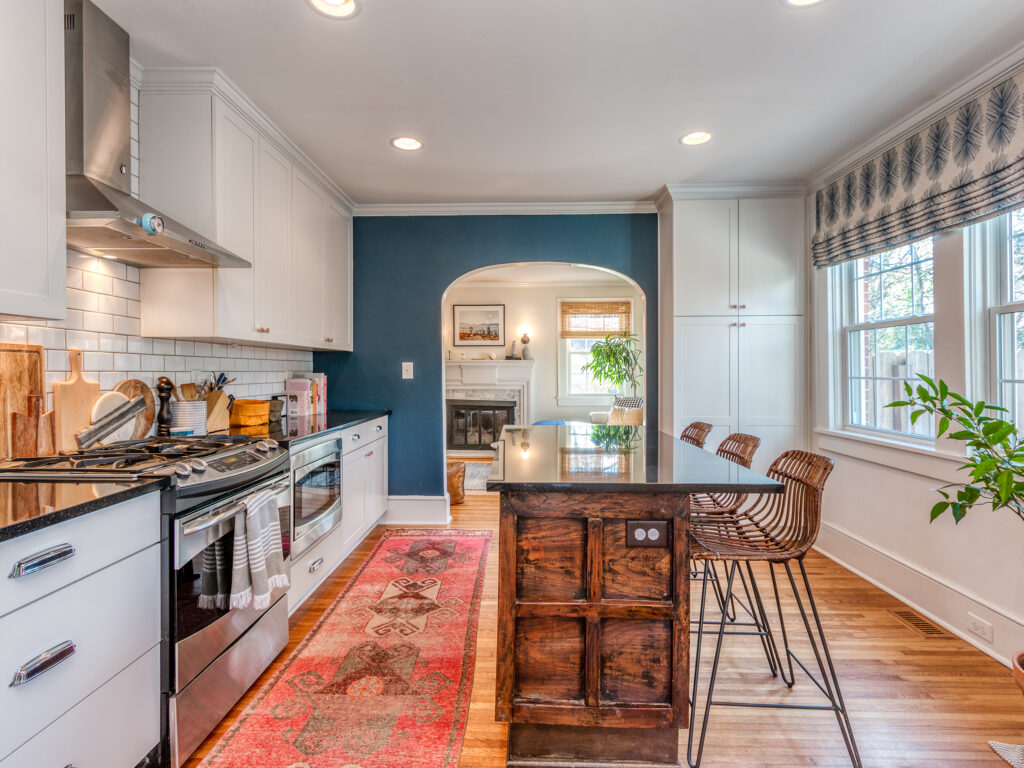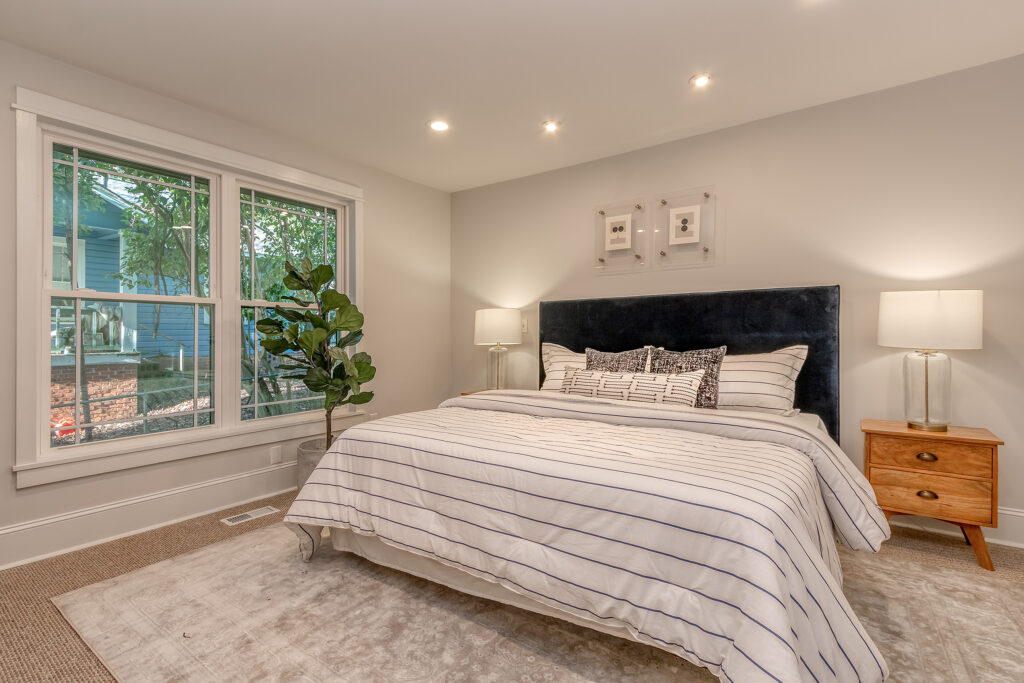In construction, it’s often said that you design from the ground up. You start by laying the foundation. And when it’s time to start designing a room, that same advice can apply. Rugs are a foundational element that both define a space and pull together a room. The right rug can last for years and refresh your room through color and texture. There are seemingly-endless rug options out there so where do you start? Here are our tips and tricks for getting your rug right in any room…
Choose the Right Size
Arguably the most important aspect of selecting a rug is choosing the right size for the space. Think about it like Goldilocks. You don’t want it too small or too big. You want it just right.
- Living Room: A rug should anchor your seating arrangement so make sure the front legs of sofas and chairs are on the rug. Also, allow for at least 6″ of rug to show on each side of your furniture.
- Dining Room: Make sure the dining chairs are all on the rug around the entire table. You’ll want a rug that extends at least 2 feet on each side of your table so there is plenty of room to comfortably pull out the chairs.
- Bedroom: Ensure that the rug extends at least 1 foot from the end of the bed. Plus, allow for a minimum of 8″ of rug on each side of the bed so you have a soft, warm place for your feet to land.

Know What Materials Works Best for You
Don’t overlook the importance of the material a rug is made from because that impacts durability, price, and the needed care. Think about if the rug will see a lot of traffic or if spills are common in the space, for example.
- Natural Fibers like Wool, Cotton, and Silk: Typically durable and long-lasting, but often pricier and require professional cleaning.
- Synthetic Fibers like Acrylic, Polyester, and Polypropylene: Affordable and easy-to-clean, but usually needs replacing sooner than natural fiber rugs.
- Low-Pile Rugs: Have shorter fibers and loops making them best for high-traffic areas.
- High-pile rugs: With taller, looser fibers (like shag or Moroccan-style rugs), high-pile rugs are plush and ideal for cozier spaces like bedrooms and living rooms.
- Outdoor Rugs: Made for performance (from synthetic fibers) and to handle the elements so you don’t need to worry about moisture, mildew, mold, or sun exposure. Thanks to their durability, they can be great options indoors too.

Let Your Design Style Reign
Now, the fun part — selecting the colors and patterns that speak to you! If you have a more traditional design aesthetic, Persian or Oriental-style rugs may appeal to you. They work beautifully with your time-honored pieces and classic furniture. If you lean towards contemporary, a geometric pattern or a non-patterned textured rug has clean lines. If you love a Bohemian vibe, Kilim or Dhurrie rugs are popular picks. There aren’t really any steadfast rules here. Just remember it’s all about balance. If you want a bold rug, balance it with quieter furniture or if you love mixing patterns, make sure the scale and color palettes play well together.

Layering Rugs
We oftentimes work with home stagers when listing a property. One of the tricks up their sleeve is layering rugs. What do you do if you find a rug that you love, but it isn’t quite the right fit for your room? Layer it! What if you want to add color or pattern to wall-to-wall carpet, layer a rug on it! It’s such an amazing solution in so many rooms.
- Layering a Rug over Carpet: You can absolutely do this if you have a low-pile carpet. It just doesn’t look or function well over a shag or other high-pile rug.
- Layering a Rug over Another Rug: The biggest tip for layering is to have your bottom layer rug be a natural, neutral, flatweave. Then your top rug really shines, while still getting the benefit of properly filling the space. Be sure to think about rug sizes and scales when you layer. You want it to look intentional!

Do you have any burning rug questions you want answered? Leave a comment below. We are happy to help!






